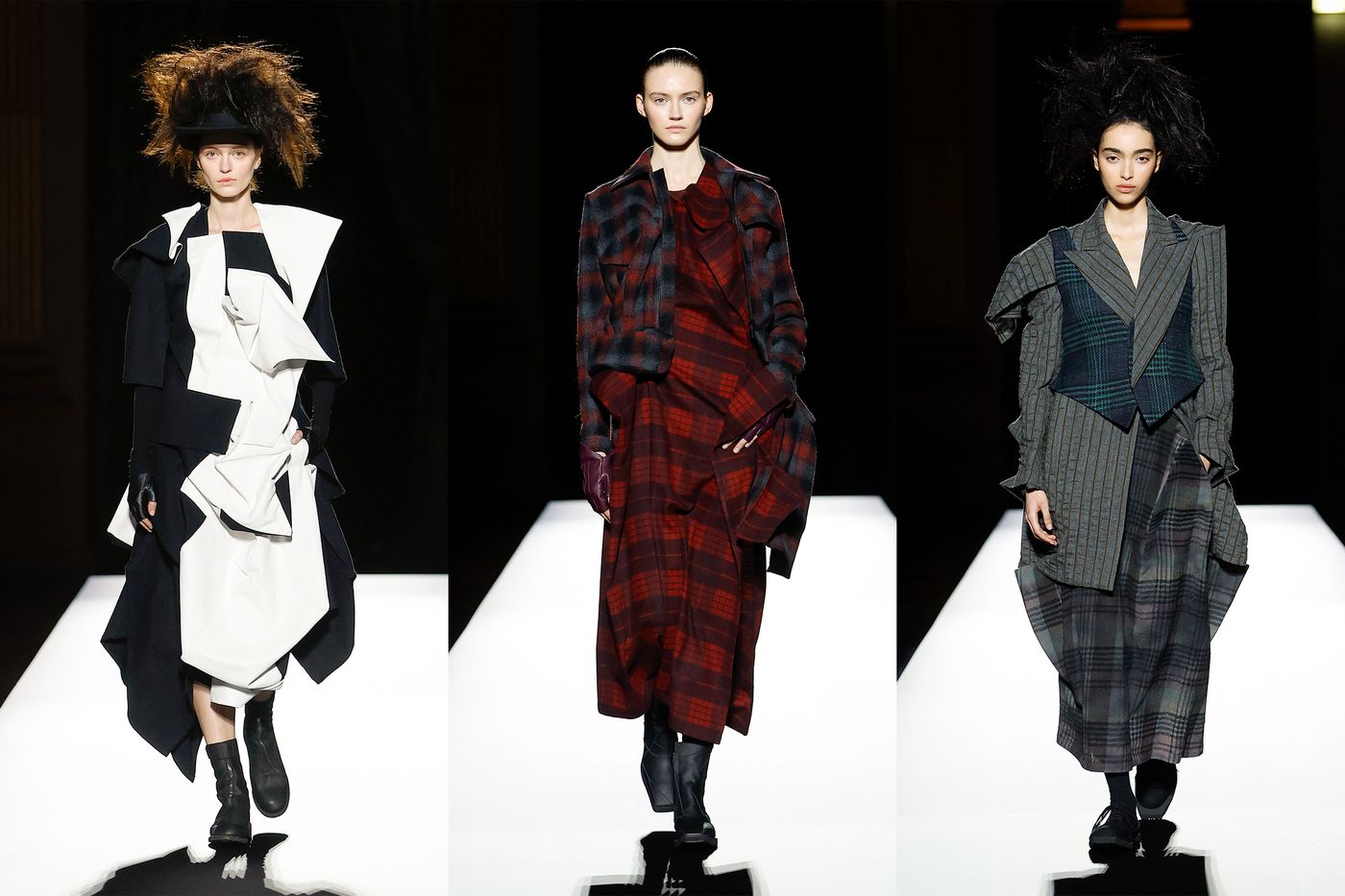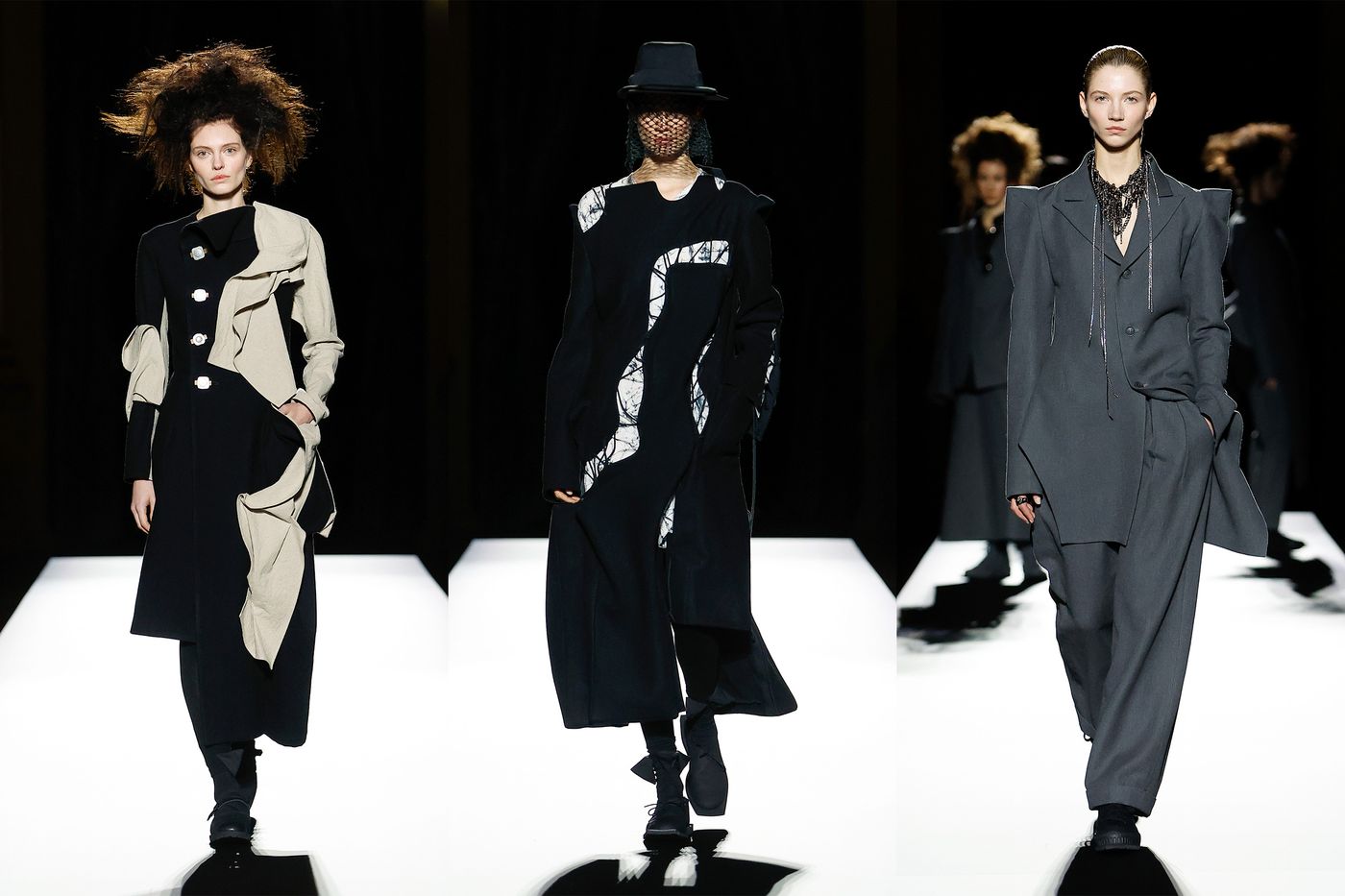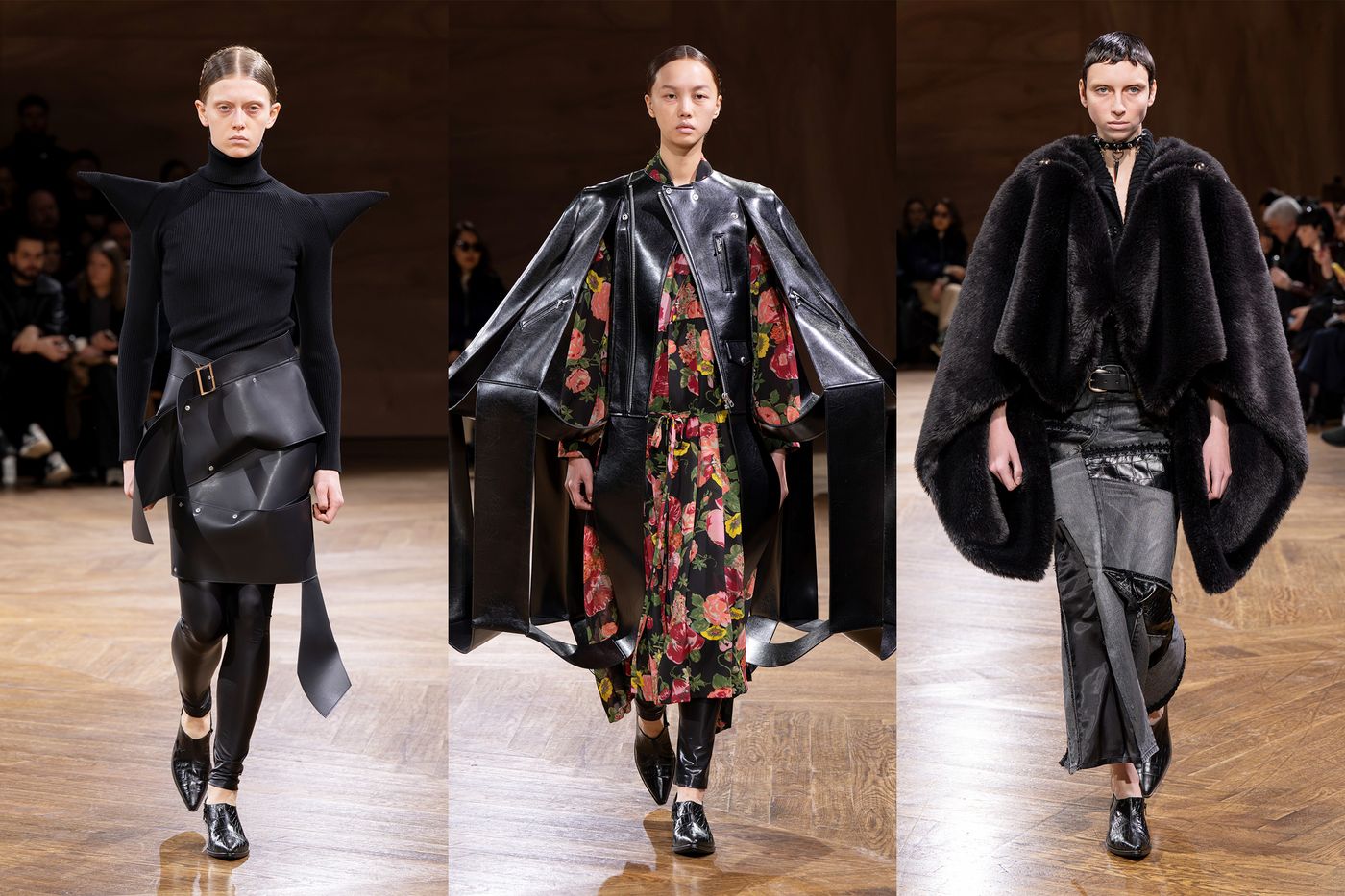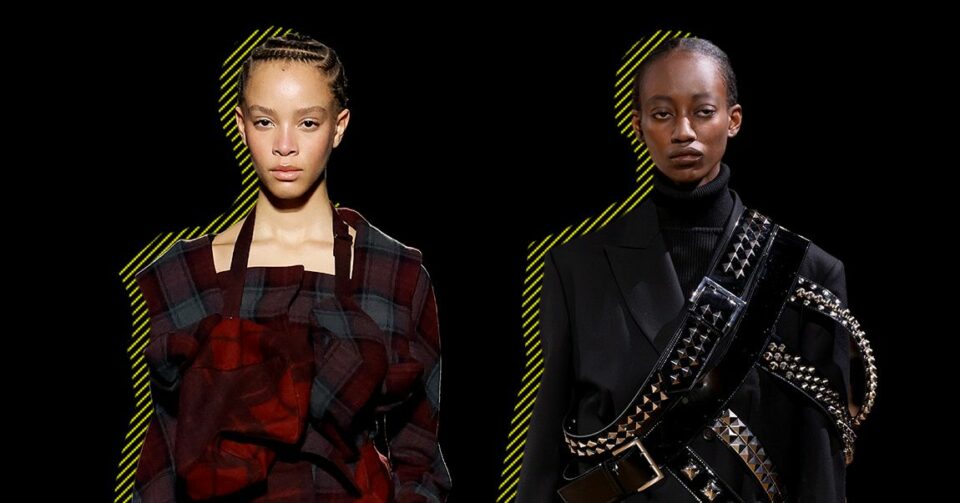There are enough shows that attract celebrities, but it’s rare to look across a runway and see a section of guests who qualify as fashion and art royalty — with no paparazzi circling them. That’s how it was on a rain-soaked night at Yohji Yamamoto’s show. The section included the curator Klaus Biesenbach, the musician Warren Ellis, the milliner Stephen Jones, the museum director Miren Arzalluz, the former designer Diane Pernet, and designer Michèle Lamy. There were many more people I didn’t recognize but whose chic and mannerisms made some of us in our section curious. I suspect many have been a part of Yamamoto’s Paris world, but they reminded me of how the stands at the shows here used to look.

And it was a special Yamamoto collection. It went off in semi-darkness on a raised catwalk — just enough light to make out the silhouettes of the mostly black clothes, which seemed to be the point. Cubist painting was a source for wool coats and dresses adorned with small boxes made from the same material. Clustered together, the cubes tumbled down the sides and backs of garments. More than usual of late, this show seemed a real test of Yamamoto’s legendary patternmaking skills.

In a way, the Cubist connection became more digestible and more serene when a black coat (or dress) came out with folded geometric pieces of white fabric running down one side. Looking at the compositions in faded red-and-gray tartan, I thought of Jonathan Anderson’s use of familiar objects at Loewe, such as morning coats and quaint dish-pattern prints. Yamamoto has been transforming historical and everyday clothing for decades, and he still can astonish. He closed the show with somber gray suits — somber, that is, from the front. Out back were attention-getting bustles.

Early the next morning, after giving his guests coffee, Junya Watanabe had his models yoked with large rigid black vinyl triangles and other 3-D shapes. In a statement, he explained, “I want to express the beauty of the contrast between clothes and sculptures.” Art was becoming a thing.
But it was fascinating to see how Watanabe took ideas from sculpture, its form and materials, and made compelling, original fashion. A short skirt with a wide band of black leather (or a bonded material) wound unevenly and with small gaps around the model’s body; she also wore a black turtleneck with pointy shoulders. With or without a huge flexible cage or geometric sculpture, the clothes were just fine. They included a fantastic trumpet skirt in patchwork denim and black vinyl topped with a sheared-fur shroud.

Cathy Horyn , 2024-03-04 23:11:45
Source link


